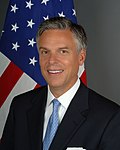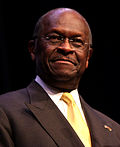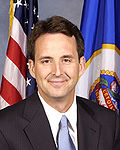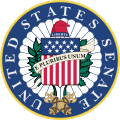November 6, 2012 | |||||||||||||||||||||||||||||
538 members of the Electoral College 270 electoral votes needed to win | |||||||||||||||||||||||||||||
|---|---|---|---|---|---|---|---|---|---|---|---|---|---|---|---|---|---|---|---|---|---|---|---|---|---|---|---|---|---|
| Opinion polls | |||||||||||||||||||||||||||||
| Turnout | 58.6% [1] | ||||||||||||||||||||||||||||
| |||||||||||||||||||||||||||||
 Presidential election results map. Blue denotes states won by Obama/Biden and red denotes those won by Romney/Ryan. Numbers indicate electoral votes cast by each state and the District of Columbia. | |||||||||||||||||||||||||||||
| |||||||||||||||||||||||||||||
| |
|---|
| Democratic Party |
| Republican Party |
| Minor parties |
| Related races |
Presidential elections were held in the United States on November 6, 2012. Incumbent Democratic president Barack Obama and his running mate, incumbent vice president Joe Biden, were elected to a second term. [3] They defeated the Republican ticket of former governor of Massachusetts Mitt Romney and U.S. representative Paul Ryan of Wisconsin.
Contents
- Background
- State changes to voter registration and electoral rules
- Nominations
- Democratic Party nomination
- Republican Party nomination
- Third party and other nominations
- Campaigns
- Ballot access
- Financing and advertising
- Party conventions
- Presidential debates
- Notable expressions, phrases, and statements
- Electoral College forecasts
- Timeline
- Results
- Electoral results
- Results by state
- Close states
- Romney's concession
- Reactions
- Voter demographics
- Hispanic vote
- Analysis
- Maps
- Gallery
- See also
- Notes
- References
- Further reading
- External links
As the incumbent president, Obama secured the Democratic nomination without serious opposition. The Republicans experienced a competitive primary. Romney was consistently competitive in the polls and won the support of many party leaders, but he faced challenges from a number of more conservative contenders. Romney secured his party's nomination in May, defeating former senator Rick Santorum, former speaker of the House and Georgia congressman Newt Gingrich, and Texas congressman Ron Paul, among other candidates.
The campaigns focused heavily on domestic issues, and debate centered largely around sound responses to the Great Recession along with long-term federal budget issues, the future of social insurance programs, and the Affordable Care Act. Foreign policy was also discussed, including the end of the Iraq War in 2011, military spending, the Iranian nuclear program, and appropriate counteractions to terrorism. Romney claimed Obama's domestic policies were ineffective and financially insolvent while Obama's campaign sought to characterize Romney as a plutocratic businessman who was out of touch with the average American. [4] [5] The campaign was marked by a sharp rise in fundraising, including from nominally independent Super PACs.
Obama defeated Romney, winning 332 Electoral College votes and 51.1% of the popular vote to Romney's 206 electoral votes and 47.2% of the popular vote. [2] He became the third sitting president in a row (after Bill Clinton and George W. Bush) to win a second consecutive term. Obama carried all 18 "blue wall" states and defeated Romney in crucial swing states that Republicans had previously won in 2000 and 2004, namely Colorado, Florida, Nevada, Ohio, and Virginia. Despite his loss, Romney managed to flip Indiana, North Carolina, and Nebraska's 2nd congressional district from the 2008 election. Ultimately, Obama won eight of the nine main swing states, losing only North Carolina. [6]
As of 2025 [update] , this is the most recent presidential election in which the Democratic candidate won Iowa, Ohio, and Florida, along with Maine's 2nd congressional district. This also remains the most recent election in which an incumbent president won re-election to a second consecutive term, in which the incumbent presidential party won re-election, and in which the Democratic ticket did not include a woman. It is also the most recent presidential election in which the party that won the presidency did not also win control of both chambers of Congress. As of 2025, this is the earliest presidential election in which all major party nominees for president and vice-president are still alive.


































































